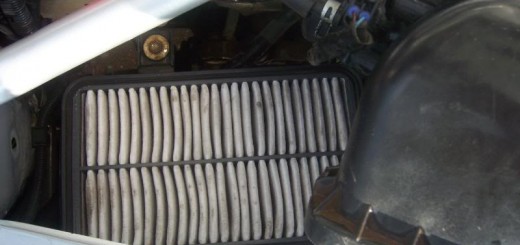Fuses
Tools required: None
Difficulty: If you can’t figure this out after reading my writeup.. Step away from the car.
Probably the easiest thing to check is the fuses.
First you need to get your fuse removal tool. Go to the engine compartment in the back and find the fuse box (as shown below). Note: The fuses you are looking for are NOT located back here. You just need the tool to remove the tiny fuses.

Now grab the white thing I’m pointing to in the picture below.


Neat huh?
Now go back up to the frunk and find the fuse box and take the cover off. On the underside of the cover you will find a diagram, situate it so the fuse pattern matches the fuses themselves (it’s easier then it sounds once you look at them). I included a picture of the diagram situated as though you were standing on the side of the car next to the fuse box. I also put two red arrows pointing to the fuses you will need to check.

Now take your tool and remove the fuses to inspect them.

What you’re looking for is a broken wire. This means the fuse is blown, I have a comparison below.

The one on the left as you can see has a solid wire all the way through. It is fine, but the one on the right has a break in the wire. That means it’s shot as was mentioned before.
If you do have a blown fuse fear not. Toyota thought of everything and included a couple of spare fuses of varying ratings. Make sure you pick the one with a 30 on it if you do end up having to replace one of the fan fuses otherwise you will just blow out your brand new fuse once the fan kicks in. I circled the spare fuses in the picture below.

Relays
Next up are the relays.
Tools required: A multimeter and probably some 14 gauge electrical wire.
Difficulty: Easy as pie.
This first picture is a well written set of instructions on how to do this. I am mostly guiding you on a few (very) basic points it doesn’t cover for this part of my how-to.

The relays are located in the same fuse block and the fuses were. I’ve put arrows going to the relays you need to check in the picture below.

Pull one out and set it upside down somewhere.
Next you will want to set your multimeter up so it is measuring resistance (ohms). This picture shows mine setup to do just that.
A little side note, I went to lowes to get a cheap multimeter and they had one for 15 bucks but there was only one left and it was opened. I’ve had that one before but lost it or something and it worked just fine. However the one shown in this picture was bought at advance autoparts for 16 dollars and I can say for sure it is of much higher quality.

Now you will want to connect the wires up to the electrodes as shown to check for continuity. If you do have continuity you will get a reading (for example 100) if there isn’t any you will just get a 1 like is shown in my picture above.
The motors themselves
Tools: Your hands.
Difficulty: Stupid easy
Another easy test is to see if the motors work. I want to make it clear this test isn’t going to give you a definitive answer but it can help to point you in the right direction. Basically all you have to do is spin the fan blades and see how long they keep spinning. If one spins a lot shorter ammount of time it could mean it’s either dead or on it’s way out. Here’s a video showing a aging motor.
http://s20.photobucket.com/albums/b221/dar…es6-24-0830.flv
If the motor is bad here’s a writeup for replacing that.
The grounds
Tools: Wire stripper/cutter
Difficulty: Easy but not necessarily for the total idiot.
I don’t have any pictures of this but I can tell you how to do it. Basically you just need to cut the ground wire of your motor and try to ground it to the chasis of your spyder by stripping the insulation off and attaching it to some piece of metal on the car. To attach it you can just tape it and I’ve heard using liquid tape can be a good idea as well.
This documentation in no way replaces the Toyota MR2 Repair Manuals. The purpose of this content is only to provide supplementary information to fellow MR2 enthusiasts. Midship Runabout and its contributing authors will not be held responsible for any injury or damages that may occur as the result of practicing any of the methods or procedures described within this website. Article and photo submissions are property of the contributing author.

